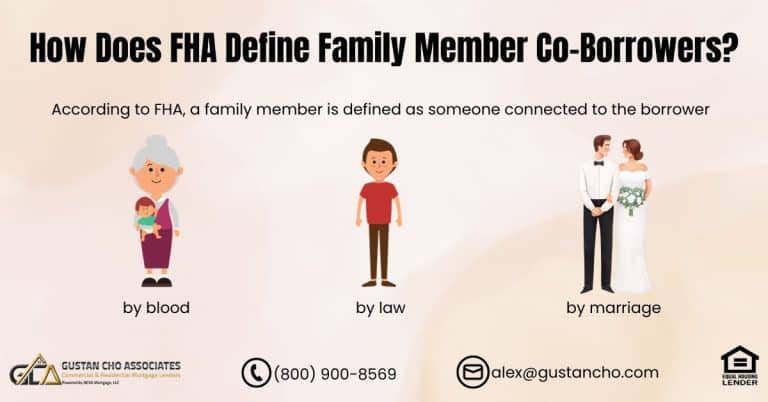Excluding Debts from DTI Calculations in 2024: How You Can Qualify for a Mortgage with High Debt-to-Income Ratios
One of the biggest challenges homebuyers face when trying to qualify for a mortgage is a high debt-to-income (DTI) ratio. If you’ve ever been told your DTI is too high to qualify for a loan, you’re not alone. But there’s good news: excluding debts from DTI calculations can help you qualify for the home loan you need, whether you’re buying a new house or refinancing your current mortgage.
In this guide, we’ll explain how excluding debts from DTI calculations works, which debts can be excluded, and the specific guidelines for popular loan programs like FHA loans. This updated 2024 guide simplifies everything so you can learn how to increase your chances of qualifying for a home loan, even if you have a high DTI ratio.
What Is the Debt-to-Income Ratio (DTI)?
Before we dive into how you can exclude debts from your DTI, let’s first define what DTI is.
Lenders assess the proportion of your monthly income dedicated to repaying debts using the debt-to-income ratio. Determining if you qualify for a mortgage is heavily influenced by this factor. A high DTI means more of your income is tied up in debts, making lenders view you as a riskier borrower.
There are two types of DTI ratios:
- Front-end DTI: This is the income percentage for your housing expenses, like your mortgage, property taxes, and homeowners insurance.
- Back-end DTI: Consider all your housing costs along with any other monthly financial obligations, such as credit card balances, student loans, vehicle loans, or personal loans.
For example, if you make $6,000 monthly and your total monthly debts (including your housing payment) are $3,000, your back-end DTI is 50% ($3,000 ÷ $6,000 = 0.50 or 50%).
Want to Qualify for a Home Loan? Learn How Excluding Certain Debts Can Help You!
Contact us today to see how we can help you qualify for your home loan by adjusting your DTI.
What Is a Good DTI Ratio?
Borrowers with a lower DTI ratio are usually preferred by lenders. The maximum DTI allowed for most loans is usually between 36% and 50%. This limit varies depending on the type of loan and whether the borrower meets other compensating factors, like high credit score or significant down payment.
- Conventional Loans: Maximum back-end DTI is usually 43% to 50%.
- FHA Loans: FHA loans, known for their flexibility, allow a back-end DTI as high as 56.9% for borrowers who get approved through automated underwriting.
But what happens if your DTI is too high? That’s where excluding debts from DTI calculations can come into play.
Excluding Debts from DTI Calculations: The Basics
If you have debts someone else is paying; those debts might not need to be included in your DTI calculation. This can significantly lower your DTI and help you qualify for a mortgage. Common examples include car or student loans, where a parent or someone else makes the payments.
Here’s how it works:
- The debt is in your name, but someone else has made the payments for at least 12 months.
- You must provide proof of those payments (12 months of canceled checks or bank statements).
- The lender can exclude that debt from your DTI calculation if you satisfy these requirements.
This option is available across various loan programs, but each has specific guidelines. Let’s explore how excluding debts from DTI calculations works with FHA loans and other mortgage types.
FHA Loan Guidelines for Excluding Debts from DTI Calculations (Updated for 2024)
FHA loans are a top choice for many borrowers, particularly those with high DTI ratios. HUD (the U.S. Department of Housing and Urban Development) oversees the Federal Housing Administration (FHA), which provides loans with lenient credit and DTI criteria.
In 2024, FHA loans will continue to allow excluding debts from DTI calculations if certain conditions are met:
- Debts paid by someone else: If someone else has been paying a debt in your name (for example, a parent paying your student loan or car loan), that debt can be excluded from your DTI if:
- The person paying the debt has made the payments for at least 12 months.
- Proof can be provided with 12 months of canceled checks or bank statements.
- Co-signed debts: If you co-signed a loan for someone, but they’re making the payments, that debt may also be excluded from your DTI if you provide proof of the other party making payments.
Example: You co-signed a car loan for your friend, but they’ve been making monthly payments. If you can provide 12 months of canceled checks or bank statements from your friend’s account, the car loan could be omitted from your DTI when you apply for an FHA loan.
HUD DTI Guidelines for Manual Underwriting
If your FHA loan goes through manual underwriting (instead of automated approval), the allowable DTI ratios are lower. However, excluding debts from your DTI can still help you qualify. The DTI limits for manual underwriting are:
- 31% front-end and 43% back-end with no compensating factors.
- 37% front-end and 47% back-end with one compensating factor (like a large down payment or additional income sources).
- 40% front-end and 50% back-end with two compensating factors.
By excluding certain debts from your DTI calculation, you could fit into these guidelines and improve your chances of approval.
What Types of Debts Can Be Excluded from DTI Calculations?
Not all debts are treated equal when excluding them from DTI calculations. The following are some common types of debts that may be excluded if someone else makes the payments.
- Student Loans: If a parent or another party has been paying your student loans for at least 12 months, these payments can be excluded from your DTI.
- Car Loans: Similar to student loans, if someone else has been paying your car loan, and you can show proof of 12 months of payments, the car loan can be excluded from your DTI.
- Mortgages: If you co-signed a mortgage but aren’t responsible for making the payments, that mortgage may be excluded from your DTI if the other party has made consistent payments for 12 months.
- Installment Loans: Loans that are set to be fully repaid within 10 months or less might not be included in your DTI, particularly if they are non-mortgage debts such as personal loans or outstanding credit card balances.
- Business Debts: If you have a loan for a business, and the debt is being paid by the business (not you personally), it may be excluded from your DTI. You’ll need to provide documentation proving the debt belongs to the business.
How Excluding Debts Can Help You Qualify for a Mortgage
By excluding certain debts from your DTI calculation, you lower the total debt the lender considers. This could assist you in meeting the criteria for a bigger home loan or a home loan in general if your DTI was previously too elevated.
Let’s look at a few real-life examples of how this can work:
Example 1: Sarah is applying for an FHA loan, but her back-end DTI is 58%, above the maximum allowed 56.9%. However, Sarah’s parents have paid her student loans for the past two years. By excluding her student loans from her DTI, her ratio drops to 54%, and she qualifies for the mortgage.
Example 2: John is looking to buy a new home. He co-signed a car loan for his brother, but his brother has been making the payments. By excluding the car loan from John’s DTI, he lowers his back-end DTI ratio and qualifies for a higher loan amount.
Want to Buy a Home but Worried About Your DTI? Let’s Exclude Some Debts to Help You Qualify!
Contact us today to find out how we can help you exclude debts and secure your mortgage.
Common Mistakes to Avoid When Excluding Debts from DTI
Excluding debts from DTI calculations can be a valuable strategy, but it’s important to steer clear of some common errors:
- Not having proper documentation: You need to provide solid proof that someone else has been making the payments, typically through 12 months of canceled checks or bank statements.
- Assuming all debts can be excluded: Some lenders have specific guidelines, and not all debts may qualify for exclusion. It’s important to talk to your lender and understand their requirements.
- Relying too heavily on exclusions: While excluding debts can help lower your DTI, managing your overall debt levels is still important and not relying solely on exclusions to qualify for a mortgage.
Talk to a Loan Officer to Find Out if You Qualify
Want to know if excluding debts from DTI calculations can help you qualify for a mortgage? Our knowledgeable loan officers at Gustan Cho Associates are available to assist you throughout the entire process. We specialize in helping borrowers with high DTI ratios find the right loan options. Whether you’re looking to buy a new home or refinance your current mortgage, we’re here to help.
Conclusion
Excluding debts from DTI calculations is a powerful strategy for borrowers with high debt-to-income ratios who are looking to buy a home or refinance. Understanding the workings of this process and ensuring you possess the correct documentation may enable you to qualify for a greater loan amount or even attain approval in situations where you thought it was unattainable.
Contact us today for more information on how excluding debts from DTI calculations can help you. We’re available 7 days a week, evenings, weekends, and holidays to assist with your mortgage needs.
Let us help you find the mortgage solution that’s right for you!
Frequently Asked Questions About Excluding Debts From DTI Calculations:
Q: What Does Excluding Debts from DTI Calculations Mean?
A: Excluding debts from DTI calculations means that certain debts, which someone else is paying on your behalf, may not be included when calculating your debt-to-income ratio. This can lower your DTI and help you qualify for a mortgage.
Q: How can Excluding Debts from DTI Calculations Help me Get a Mortgage?
A: If someone else has been making payments on certain debts, excluding those from your DTI can lower the total debt amount the lender considers. This may help you qualify for a loan or even allow you to borrow more money.
Q: Which Debts Can be Excluded from DTI Calculations?
A: If someone else has been making payments on debts like student loans, car loans, and mortgages for at least 12 months, they can be excluded from DTI calculations. Documentation such as canceled checks or bank statements must be provided.
Q: Can Co-Signed Loans be Excluded from My DTI?
A: Yes, co-signed loans can be excluded from your DTI calculations if the other person (the primary borrower) has been making payments for at least 12 months and you provide proof of those payments.
Q: Do All Lenders Allow Excluding Debts from DTI Calculations?
A: Not all lenders may allow this. Each lender has specific guidelines, so it’s important to talk with your loan officer about whether excluding debts from DTI calculations is an option for your situation.
Q: What Documentation is Required to Exclude Debts from DTI Calculations?
A: To exclude debt from DTI calculations, you must show 12 months of canceled checks or bank statements proving that someone else has been making the payments.
Q: Can Student Loans be Excluded from My DTI if Someone Else Pays Them?
A: Yes, if someone like a parent has been paying your student loans for at least 12 months, those payments can be excluded from your DTI calculations with proper documentation.
Q: How do FHA Loans Handle Excluding Debts from DTI Calculations?
A: Flexibility is offered by FHA loans in excluding debts from DTI calculations. If someone else has been making the payments for 12 months, debts like student or car loans can be excluded, as long as you can provide proof of payment.
Q: Can Business Debts be Excluded from DTI Calculations?
A: Yes, if the business is responsible for paying the debt and you can show documentation that it belongs to the business, it can be excluded from your DTI calculations.
Q: How Much Can Excluding Debts from DTI Calculations Improve My Chances of Getting a Mortgage?
A: Excluding debts from DTI calculations can lower your DTI ratio, making it easier for you to qualify for a mortgage. Sometimes, it could mean the difference between being approved or denied, or it could allow you to qualify for a larger loan.
This blog about the waiting period after foreclosure requirements for borrowers on title but not on mortgage was updated on October 10th, 2024.
Qualify for a Home Loan by Excluding Certain Debts from Your DTI Calculation!
Contact us today to learn how we can assist you with this process and get you on track for homeownership.











I need some clarification. If a person purchased a house and the mortgage statement and note shows that person as the primary borrower and his/her relative as the co-borrower can that person provide 12 months canceled checks to show the relative has been making the monthly mortgage payments, thus excluding the payments from the DTI?
Yes they can.